|
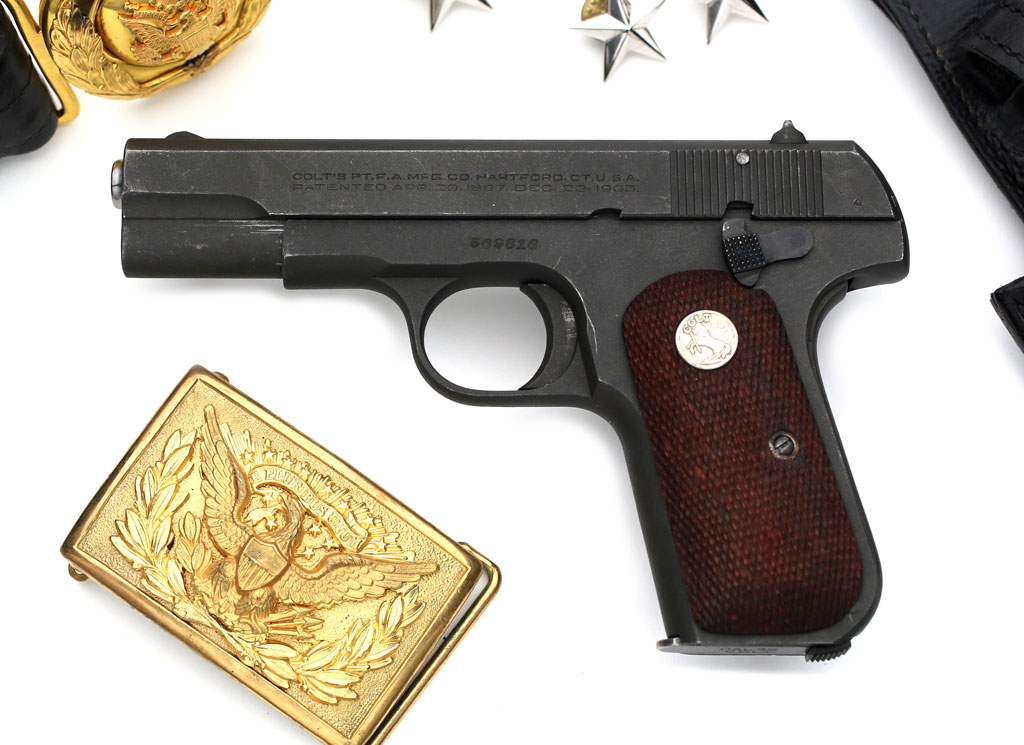 Colt Model M .32 ACP serial number 569816 -
Military Model M .32 ACP pistol, original finish, parkerized
trigger, thumb safety and grip safety, with U.S. PROPERTY
mark on right side of frame and ordnance wheel on left rear
of frame behind thumb safety. Pistol is documented as
having been issued to Major General Robert George
MacDonnell.
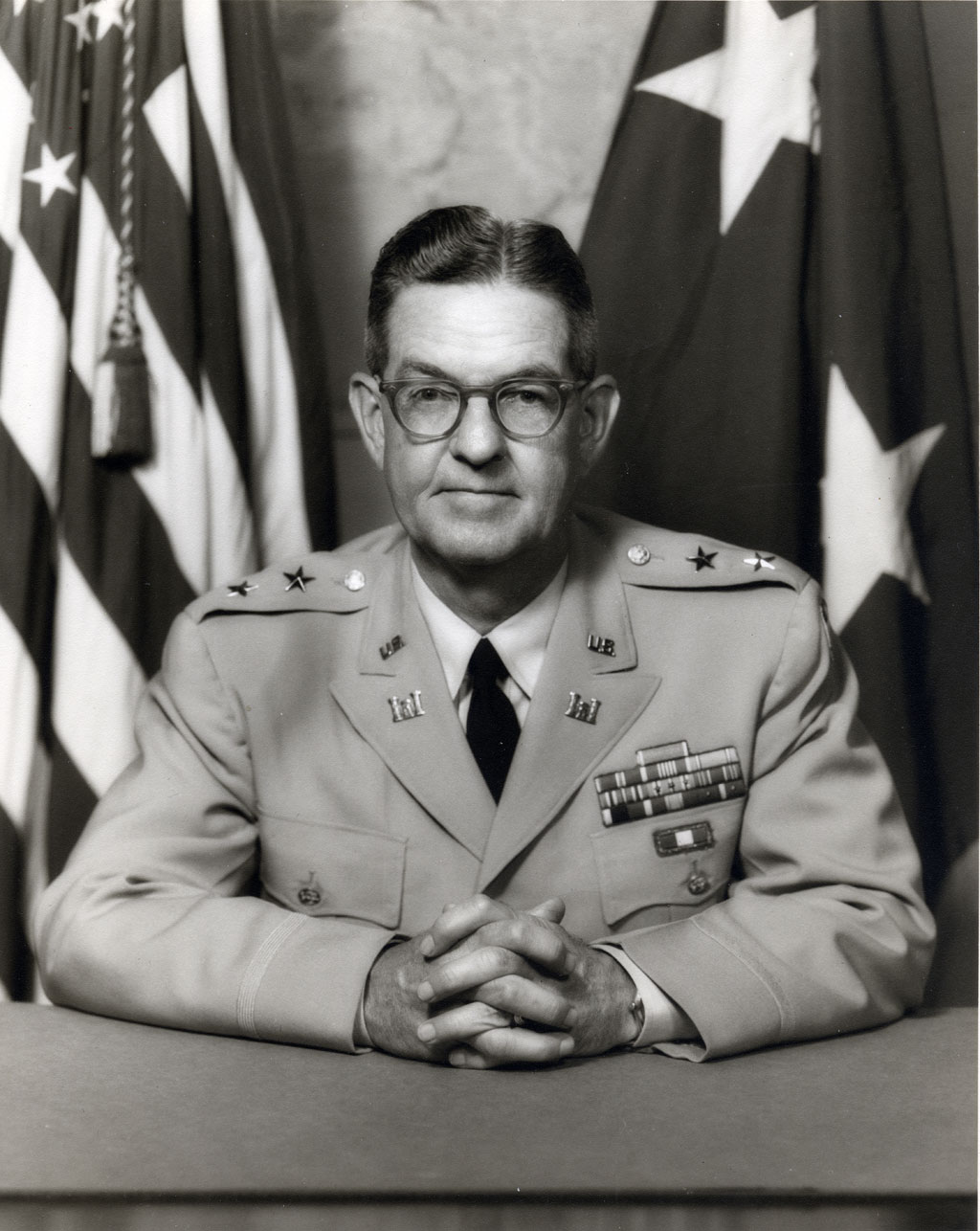
Major General Robert G. MacDonnell, USA, O-19361, 14
May 1962, Photo by Oscar E. Porter, U.S. Army Photographic
Agency, The Pentagon, Washington 25, D.C.
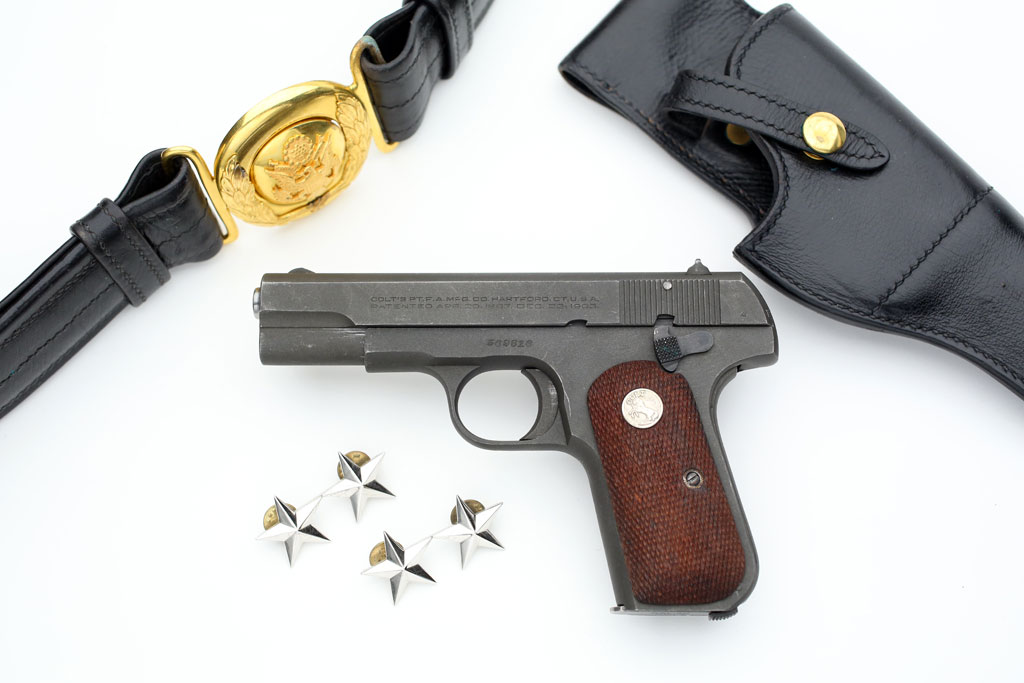
MAJOR GENERAL ROBERT GEORGE MacDONNELL,
USA
Robert G. MacDonnell was born in Spokane, Washington, May
10, 1911. He attended the United States Military Academy and
upon graduation in 1934 was commissioned in the Corps of
Engineers.
Assigned as assistant to the District Engineer, Portland,
Oregon, he served on the construction of Bonneville Dam
until 1935, when he was reassigned to
Fort Lawton, Washington as Company Commander with the Sixth
Engineer Regiment.
In 1937 he attended the University of California and was
graduated in 1938 with a Master of Science degree in Civil
Engineering. He was then assigned as assistant to the
District Engineer at Sacramento, California and subsequently
as a student at the Engineer School, Fort Belvoir, Virginia.
During the period 1939 to 1941 he served with the Eighth
Engineer Squadron in the 1st Cavalry Division. In 1941 he
was assigned to the faculty of the United States Military
Academy as an instructor in Engineering and served in that
capacity until June 1943.
From June 1943 until January 1944, he was Director of
Training, Engineer Unit Training Center at Camp Claiborne,
La. He then assumed command of the First Engineer Petroleum
Production Depot, Camp Santa Anita, California and served
with the unit until its deactivation at which time he was
assigned as Director of Training, Engineer Unit Training
Center, Camp Sutton, North Carolina.
General MacDonnell served as Assistant Engineer and later
Acting Engineer of the Eighth Army in the Pacific from
November 1944 to May 1947. He participated in the New
Guinea, Southern Philippines, Luzon and Leyte Campaigns.
Upon his return to the United States, he was assigned to the
United States Military Academy as Associate Professor in
Military Art and Engineering. He later attended the Army War
College, graduating in 1952.
From 1952 to 1953 he was assigned as the Engineer, VII U.S.
Army Corps, Stuttgart, Germany and from 1953 to 1955 served
as Deputy Chief of Staff for that organization. Returning to
the United States in 1955, he was assigned to the Army War
College as Director of a course in National Strategy.
On 1 August 1956 he was promoted to Brigadier General and
named Assistant Commandant of the U.S. Army Engineer School,
Fort Belvoir, Virginia. In July 1958 he was assigned as
Division Engineer, San Francisco and assumed command of a
construction agency composed of 18 officers and more than
3400 civilian employees which was responsible for the
supervision of construction totaling over $200,000,000
yearly. Construction included missile programs of national
importance and was in progress at 57 Army and Air Force
installations and 45 Civil Works locations.
General MacDonnell was President of the California Debris
Commission; a member of the Beach Erosion Board; Army
representative of the Pacific Southwest Interagency
Committee, comprised of the Governors of nine western states
and Executives of Federal Agencies concerned with water
resources development; member of the California State
Federal Interagency Group; member of Advisory Council,
University of California Water Resources Center; consultant
to the U.S. section of the International Boundary and
Water Commission, U.S. and Mexico; and a member of the Board
of Engineers for Rivers and Harbors, which reviews surveys
for Civil Works Projects throughout the U.S. He assumed his
duties as Director of Military Supply, Office of the Chief
of Engineers, Washington, D.C. in September 1961. He was
appointed Director of Civil Works, effective 1 April 1962,
and promoted to Major General l May 1962.
As Director of Civil Works he was responsible for the
planning and execution of an annual water resources program
of over one billion dollars, carried out by an organization
of over 28,000 employees, and .the operation and maintenance
of Civil Works facilities having a total cost of more than
$18 billion. He was Chairman of the American Section of the
Permanent International Association of Navigation Congresses
(Brussels).
On 1 March 1963 he was appointed Deputy Chief of Engineers.
He is Chairman of the United States Board of Engineers for
Rivers and Harbors, and President of the Beach Erosion
Board.
He wears the Legion of Merit, the Bronze Star Medal and the
Army Commendation Ribbon. His foreign decorations include
the Philippine Presidential Unit Citation, and Philippine
Liberation Ribbon. He is a registered professional engineer.
General and Mrs. MacDonnell have two sons, Robert and
Richard, and a daughter, Marguerite.
March 1963
|
MG Robert G. MacDonnell
AWARDS BY DATE OF ACTION |
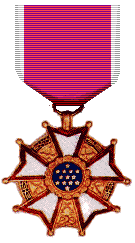 |
Legion of Merit
AWARDED FOR ACTIONS
DURING World War II
Service: Army
Rank: Colonel
Division: VIII Army
GENERAL ORDERS:
United States Military Academy Register of Graduates
CITATION:
(Citation Needed) - SYNOPSIS: Colonel (Corps of
Engineers) Robert George MacDonnell (ASN: 0-19361),
United States Army, was awarded the Legion of Merit
for exceptionally meritorious conduct in the
performance of outstanding services to the
Government of the United States with the Engineer
Section, Headquarters, EIGHTH Army, from 1944 to
1947. |
|
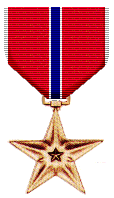
|
Bronze Star |
|
 |
Army Distinguished Service Medal
AWARDED FOR ACTIONS
DURING Vietnam War
Service: Army
Rank: Major General
Division: Corps of Engineers
GENERAL ORDERS:
Department of the Army, General Orders No. 5
(February 13, 1967)
CITATION:
The President of the United States of America,
authorized by Act of Congress July 9, 1918, takes
pleasure in presenting the Army Distinguished
Service Medal to Major General Robert George
MacDonnell (ASN: 0-19361), United States Army, for
exceptionally meritorious and distinguished services
to the Government of the United States, in a duty of
great responsibility, during the period from
September 1961 to December 1966. |
|
 |
Army Distinguished Service Medal
AWARDED FOR ACTIONS
DURING Vietnam War
Service: Army
Rank: Major General
Division: Mississippi River Commission
GENERAL ORDERS:
United States Military Academy Register of Graduates
CITATION:
(Citation Needed) - SYNOPSIS: Major General Robert
George MacDonnell (ASN: 0-19361), United States
Army, was awarded a Bronze Oak Leaf Cluster in lieu
of a Second Award of the Army Distinguished Service
Medal for exceptionally meritorious and
distinguished service in a position of great
responsibility to the Government of the United
States as President, Mississippi River Commission,
from 1967 to 1969. |
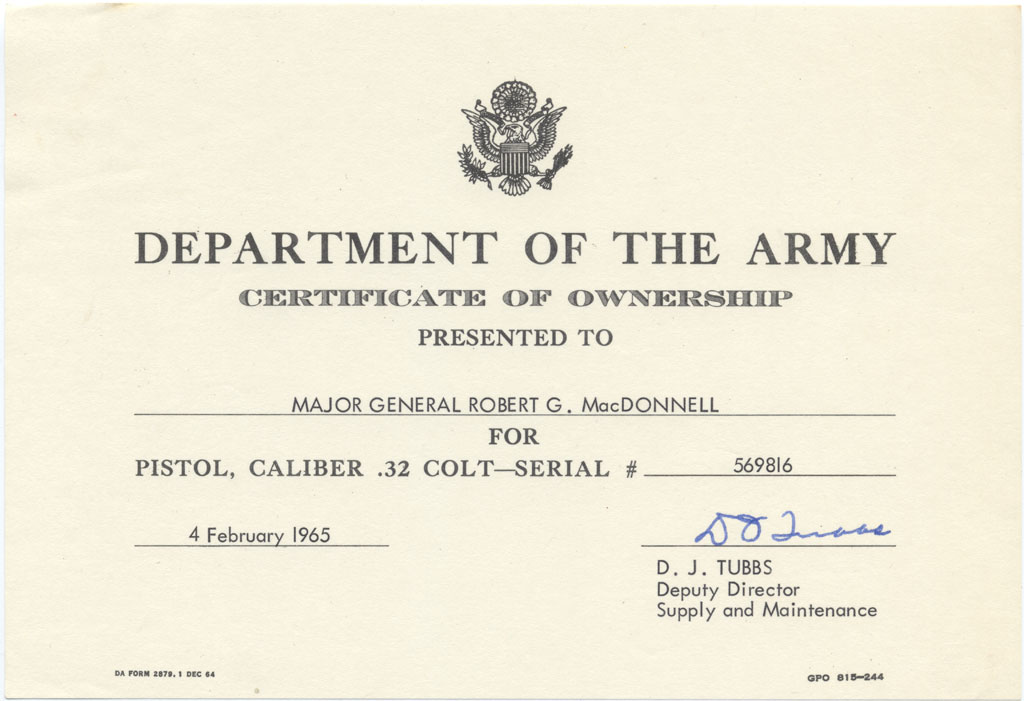
Department of the Army Certificate of
Ownership Presented to Major General Robert G. MacDonnell for
Pistol, caliber .32 Colt - Serial # 569816, 4 February 1965,
D.J. Tubbs, Deputy Director, Supply and Maintenance. DA Form
2879, 1 Dec 64, GPO 815-244.
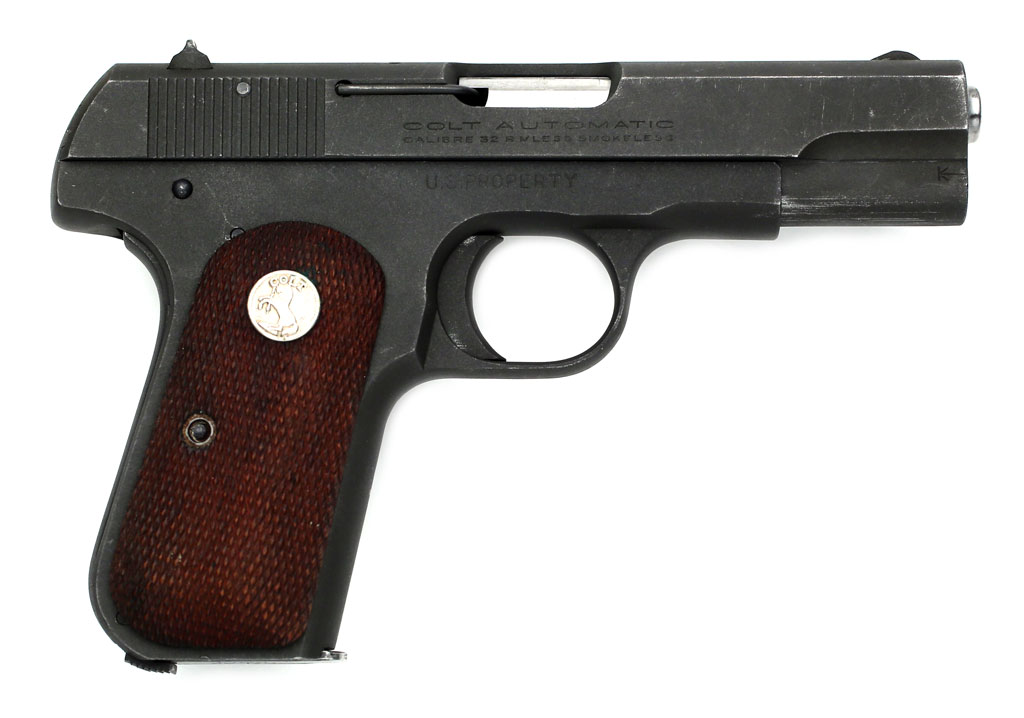
Colt 1903 Pocket hammerless .32 ACP serial number
569816 - right side showing U.S. PROPERTY mark on frame.
|
MAJOR
GENERAL ROBERT GEORGE MacDONNELL (ASN: O-19361) |
| 10 May 1911 |
|
Born - Spokane, Washington |
| 1934 |
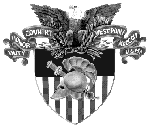 |
Graduated from West Point, Class of
1934 |
| 1934-1935 |
|
Assistant to the District Engineer, Portland,
Oregon on the construction of Bonneville Dam |
| 1935 |
|
Company Commander with the Sixth
Engineer Regiment, Fort Lawton, Washington |
| 1937-1938 |
|
Attended the University of California,
Master of Science degree in Civil Engineering |
| 1938 |
|
Assistant to the District Engineer
at Sacramento, California and subsequently as a
student at the Engineer School, Fort Belvoir,
Virginia |
| 1939-1941 |
|
Eighth Engineer Squadron in the 1st
Cavalry Division |
| 1941-June 1943 |
|
Assigned to the faculty of the
United States Military Academy as an instructor in
Engineering |
| June 1943-January
1944 |
|
From June 1943 until January 1944,
he was Director of Training, Engineer Unit Training
Center at Camp Claiborne, LA Assumed command of the First Engineer Petroleum
Production Depot, Camp Santa Anita, California and served
with the unit until its deactivation.
Assigned as Director of Training, Engineer Unit
Training Center, Camp Sutton, North Carolina |
| November 1944-May
1947 |
|
Assistant Engineer and later
Acting Engineer of the Eighth Army in the Pacific from
November 1944 to May 1947. Participated in the New
Guinea, Southern Philippines, Luzon and Leyte Campaigns. |
| 1947 |
 |
Legion of Merit |
| |
|
Associate Professor in Military Art
and Engineering, United States Military Academy |
| 1951-1952 |
|
Army War College, graduating in 1952
|
| 1952-1953 |
|
Engineer, VII U.S. Army Corps,
Stuttgart, Germany |
| 1953 to 1955 |
|
Deputy Chief of Staff, VII U.S. Army
Corps, Stuttgart, Germany |
| 1955 |
|
assigned to the Army War College as
Director of a course in National Strategy |
| 1 Aug 1956 |
|
Promoted to Brigadier General and
named Assistant Commandant of the U.S. Army Engineer
School, Fort Belvoir, Virginia |
| July 1958 |
|
Division Engineer, San Francisco and
assumed command of a construction agency.
Construction included missile programs of national
importance and was in progress at 57 Army and Air
Force installations and 45 Civil Works locations. |
| September 1961 |
|
Director of Military Supply, Office
of the Chief of Engineers, Washington, D.C. |
| 1 April 1962 |
|
Director of Civil Works |
| 1 May 1962 |
 |
Promoted to Major General |
| 1 March 1963 |
|
Deputy Chief of Engineers |
| 13 February 1967 |
 |
Distinguished Service Medal |
| 1969 |
 |
DSM, Bronze Oak Leaf Cluster |
| |
|
Retired |
| 19 Aug 1984 |
|
Died |
|